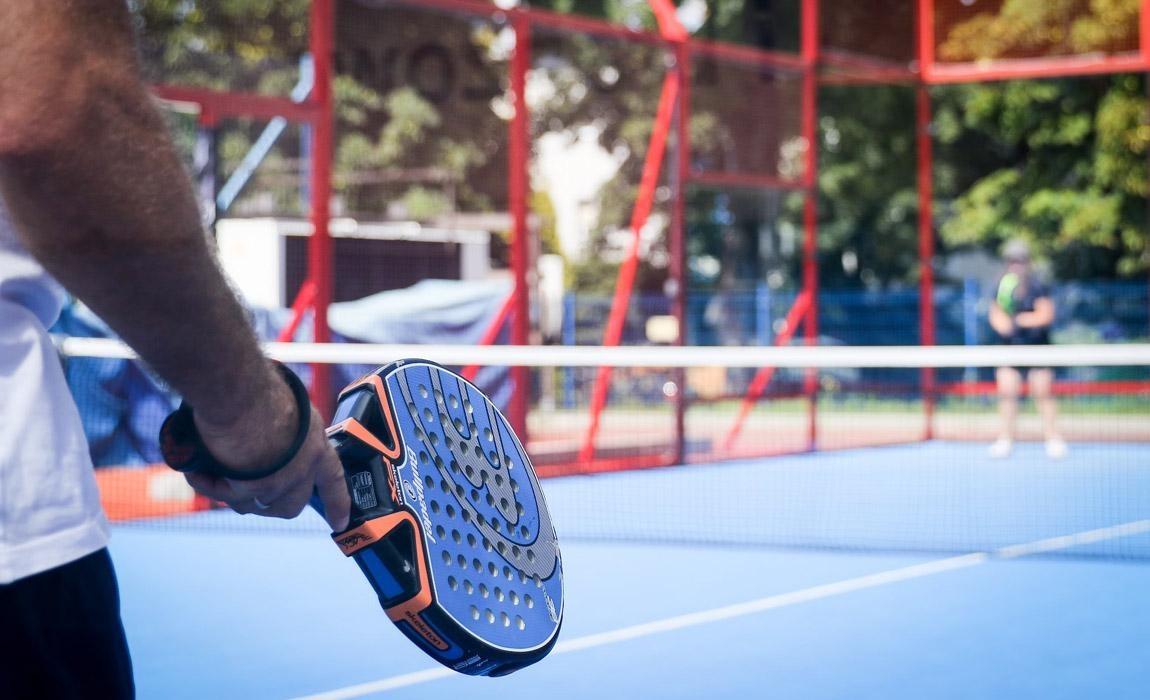I came across a "new" sport tonight - Padel. Also known as Paddle Tennis, this is a sport that combines tennis, squash, and racquetball that has gained immense popularity in Spain and Argentina, but has yet to make a significant impact in the United States. Despite its potential for revenue and appeal to younger generations, the US market faces marketing challenges and confusion around the name of the sport.
As more and more millennials seek out hybrid sports that offer a unique and exciting experience, padel presents an opportunity for growth in the US market. This article seeks to explore the potential for padel's development in the US market, considering factors such as revenue models, barriers to entry, and appeal to younger generations.
By analyzing existing data and trends, we aim to provide a comprehensive overview of the current state of padel in the US market and its potential for future growth. With the increasing popularity of hybrid sports, it is crucial to consider the potential of padel and its potential impact on the US sports market.
What is Padel?
Padel, a hybrid game combining tennis, squash, and racquetball, is mainly played doubles on a smaller court enclosed with wire mesh and glass walls. It is a fun and social sport that is less physically demanding than tennis, making it accessible to people of all ages and levels of fitness. While some in the United States refer to Padel at Paddle Tennis, that's not a correct reference since Paddle Tennis more correctly refers to a game following the rules and court design of proper Tennis, just simply scaled down in size and using paddles instead of rackets. Additionally, that sport is sometimes known as "Pop Tennis".
Confused yet?
In Spain and Argentina, the sport has gained significant popularity and there are now nearly 10,000 courts in Spain alone and 4 million regular players. The sport has also been developing rapidly in other European countries such as Portugal, Italy, and South of France, with private investors seeing business opportunities for indoor facilities.
Many people attribute this popularity to the unique gameplay that combines the best elements of tennis, squash, and racquetball. The smaller court size and enclosed walls make for a fast-paced and exciting game that is easy to learn. This smaller court size also makes it more conducive to urban locations as well as courts being installed at home where developers have created many different padel tennis ideas to make it fit in with your home's aestetic.
Padel's popularity in other countries suggests that it has the potential to become a successful sport in the US market. The sport's slow development in the US can be attributed to high barriers to entry, poor marketing, and the existence of similar paddle sports. Regardless of the challenges, Padel has the potential to appeal to a wide demographic, including millennials who appreciate its internationalness.
Padel's Development
The slow development of the sport in the US is attributed to high barriers to entry, poor marketing strategies, and the existence of other similar paddle sports such as pickleball, a sport that is currently dominating the conversation in cities like New York and Los Angeles.
While the courts are more compact than tennis, Padel courts require significant investment, and there is a lack of awareness about the sport among potential customers. Additionally, the existence of similar paddle sports like platform tennis and pickleball has led to confusion and competition.
The high cost of entry into the sport has limited the number of venues offering padel, and thus, the growth of the sport. While there is potential for significant revenue for court manufacturers, importers, distributors, and sales of padel gear and lessons, the slow development of the sport in the US has hindered its potential.
Therefore, in order for padel to become a reality in the US, more effective marketing strategies need to be implemented, and the barriers to entry into the sport need to be lowered.
Potential in the US
One potential factor in the growth of padel in the US is its appeal to millennials who value diversity and international experiences. Just as ping pong / table tennis has evolved the same core rules as tennis but for a different environment, padel has potential too. As a hybrid sport, padel offers a unique blend of tennis, squash, and racquetball that is easy to learn, fun to play, and social at all levels. With its smaller court size and slower ball speed, padel is less physically demanding than tennis, making it accessible and enjoyable for people of all ages and skill levels.
Millennials, in particular, may be drawn to padel's global appeal, as the sport is widely popular in Spain, Argentina, Portugal, and other European countries. Revenue models for padel clubs can focus on player fees and beer sales. Successful clubs in the US have focused on building a sense of community and word of mouth to grow interest in padel.
By offering a fun and social experience, padel clubs can attract a diverse and engaged audience. With the potential for significant revenue for court manufacturers, importers, distributors, and sales of padel gear and lessons, the US market presents a promising opportunity for the growth of padel. However, marketing challenges and confusion around the name of the sport may pose obstacles to its widespread adoption.
Padel vs Paddle Tennis vs Pickleball?
Pickleball and Paddle Tennis are two sports that have been gaining popularity in recent years, but many Americans may not be familiar with either of them. Although they share some similarities, these two sports have distinct rules, equipment used, and gameplay.
Pickleball is a racquet sport that combines elements of badminton, tennis, and table tennis. It is played on a court similar in size to badminton but with different sections. The game is played with a perforated plastic ball and wooden or composite paddles. Players must hit the ball over the net into their opponent's court. Pickleball has become increasingly popular in the United States due to its accessibility and ease of play for all ages and skill levels.
Paddle Tennis is also a racquet sport that combines elements of tennis and squash. It is typically played by two teams of two players each on an enclosed court surrounded by glass walls or wire mesh fencing. The game is played with a tennis ball that has slightly less pressure than regular tennis balls for a lower bounce. Paddle Tennis requires more acrobatic skills than Pickleball as it involves 360-degree turns and the need to adjust to different spins off the glass walls or fencing.
The origins of Pickleball can be traced back to 1965 when Joel Pritchard, Bill Bell, and Barney McCallum created it in Washington State as a way for their families to enjoy outdoor activities together during summer vacation. On the other hand, Paddle Tennis was invented in Mexico City in 1969 by Enrique Corcuera who wanted to create an accessible version of tennis for everyone to enjoy regardless of their skill level or physical condition.
In terms of technique, Pickleball players use various strategies such as dinking (hitting soft shots close to the net), lobbing (hitting high shots over opponents’ heads), drop shots (hitting short shots just over the net) and volleys (hitting shots without letting them bounce). Meanwhile, Padel Tennis players employ techniques such as smashing (hitting powerful shots at full force), passing (hitting low shots past opponents) and blocking (returning powerful shots without allowing them to bounce).
Although both sports have been gaining traction around the world in recent years, Pickleball has seen particularly strong growth in popularity in the United States due to its accessibility for all ages and skill levels while Padel Tennis hasn't quite caught on yet despite its growing presence in Europe and Latin America.
Hey James Hills wants you to share this!

